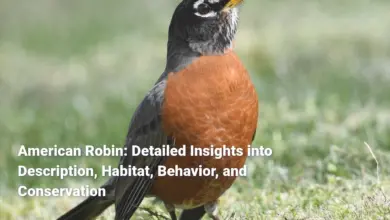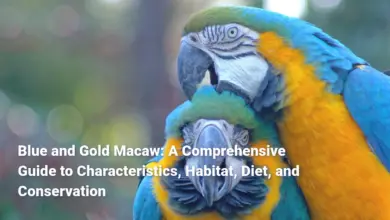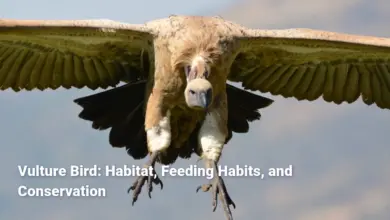Wood Pigeon: Physical Traits, Habitat, Behavior, and Conservation
The Common Wood Pigeon (Columba palumbus) is a fascinating avian species known for its striking appearance and adaptability. Found across Europe, Asia, and parts of northern Africa, the wood pigeon stands out not only for its sizeable body and distinct plumage but also for its remarkable behavioral traits. This article delves into the intricate world of the wood pigeon, examining its physical characteristics, habitat preferences, social behaviors, relationships with humans, and the ecological roles it plays.
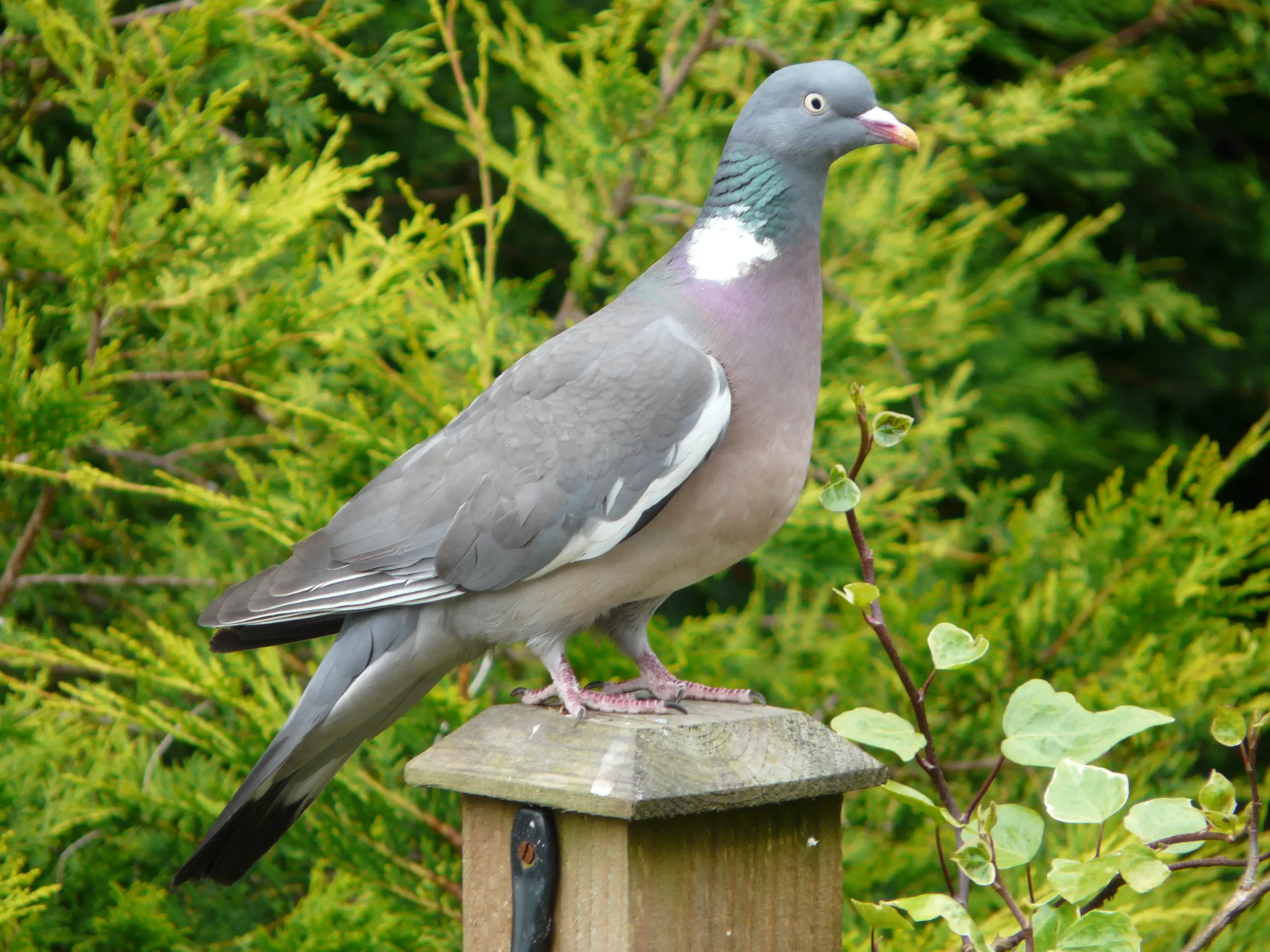
While many birdwatchers and nature enthusiasts appreciate wood pigeons for their beauty and graceful flight, there’s also much more to understand about their role in different environments and the challenges they face in a rapidly changing world. From their foraging habits that influence agricultural landscapes to their interactions with humans that exist both in harmony and opposition, the wood pigeon serves as a critical example of avian adaptability and resilience. This exploration includes a detailed analysis of various aspects, including physical characteristics, nesting behaviors, feeding rituals, and conservation issues that threaten their existence today.
Physical Characteristics
When it comes to identifying the Common Wood Pigeon, several physical characteristics set this bird apart. Its substantial size and distinct coloring make it one of the most recognizable pigeons in Europe. Adult Common Wood Pigeons typically measure between 38 and 45 centimeters (15 to 17.7 inches) in length, boasting a wingspan that can reach up to 75 centimeters (29.5 inches). This impressive stature places them above other pigeon species like the Stock Dove and the Feral Pigeon, making them a dominant figure in their habitats.
In terms of weight, Common Wood Pigeons generally range from 300 to 615 grams (10.6 to 21.7 ounces), with averages leaning towards 400 to 500 grams. These variations can often be seen regionally; for instance, wood pigeons found in Central Asia often present distinctions, such as the so-called “Cinnamon-necked” variety, which showcases a more colorful plumage compared to the typical grayish hues.
The plumage of the Common Wood Pigeon is a canvas of primarily grayish tones, lightly speckled with hints of lilac that add depth to its overall appearance. One of the key features that enthusiasts often highlight is the striking white neck patch that offers a stark contrast to the darker feathers and the iridescent green neck feathers that glisten beautifully under sunlight. In flight, these pigeons can be easily identified not just by their size but also by their broad white wing bands and black-tipped tails. These attributes distinguish them from the more slender pigeon species, adding to their overall presence.
Beyond mere aesthetics, these physical characteristics functionally contribute to the wood pigeon’s lifestyle. The stout, bulky body enables them to thrive in various environments, from urban settings to agricultural fields, where they forage for food sources. A combination of physical adaptations allows the wood pigeon to participate effectively in diverse diets, showcasing its versatility and resilience.
Size and Weight
| Characteristic | Common Wood Pigeon |
|---|---|
| Length | 38 to 45 cm (15 to 17.7 in) |
| Wingspan | Up to 75 cm (29.5 in) |
| Weight | 300 to 615 g (10.6 to 21.7 oz) |
| Average Size | 400 to 500 g (14.1 to 17.6 oz) |
As we examine these measurements, it becomes evident that the Common Wood Pigeon holds a unique position in the avian landscape. The dimensional attributes not only highlight their physical power but also lend insight into their behavior and feeding strategies. For example, their weight allows for greater endurance when traveling long distances during foraging, while their size can play a role in their interactions with predators and other birds.
Moreover, the varied weights across different populations emphasize the adaptability of this species in responding to environmental conditions. For instance, wood pigeons that reside in harsher climates may develop slightly heavier bodies, enabling them to survive better in those conditions.
Plumage and Coloration
Diving deeper into the external features of the Common Wood Pigeon, we find that its plumage and coloration display a captivating complexity. Notably, adult pigeons exhibit grayish-blue feathers overlaying a more muted brownish pattern in their wings. This coloration serves multiple purposes, from camouflage against predators in woodland environments to showcasing vibrant reproductive traits. The most striking feature, a bold white neck patch bordered by iridescent greens and purples, becomes a visual cue during courtship displays and flight.
Juveniles present a different picture altogether. Their plumage tends to be duller, lacking the defined white neck patch of their adult counterparts. As maturation progresses, they begin to develop the characteristic features recognized in adult wood pigeons. This process not only marks growth but also ensures that young pigeons are well-equipped for recognition by peers and potential mates.
In nature, colors and patterns often convey messages. For the wood pigeon, their plumage can signal health and vitality, ensuring mate selection during the breeding season. As such, these markings do not merely serve aesthetic functions but also play an integral role in their reproductive success.
Distinctive Markings
One of the most iconic aspects of the Common Wood Pigeon is its distinctive markings, which aid significantly in its identification in the field. Key features include the large white neck patch that becomes especially pronounced when the bird is in flight, serving both as a visual cue for mate recognition and as a characteristic distinguishing it from other pigeon species.
The broad white wing bands, visible from a distance during flight, allow for easy recognition. Observers often note how these features add elegance to the bird’s movements, lending it a gracefulness that captivates birdwatchers and nature enthusiasts alike.
- White Neck Patches: This feature is a definitive identifier for adults, easily spotted when the bird is in motion.
- Broad White Wing Bands: These are vital when identifying flying wood pigeons from afar.
- Tail Markings: The tail feathers, with their distinctive black and white bands, further contribute to the bird’s identification.
- Eyes and Beaks: Dark eyes and small, dark beaks give an additional point of contrast against their colorful plumage.
These distinctive markings not only facilitate identification but also have evolved to assist in the social dynamics of wood pigeons. During courtship, males display their plumage ostentatiously to attract mates, flipping their wings and puffing up their necks to showcase their vibrant features. This behavioral display underscores the crucial role that physical attributes play in the wood pigeon’s life, combining necessity with beauty in their ongoing struggle for survival and reproduction.
Habitat and Distribution
The Common Wood Pigeon is not merely a beautiful sight but a versatile inhabitant of varied ecosystems. Predominantly found across Europe, Asia, and northern Africa, its adaptability is evident in its habitat preferences. They thrive in diverse ecological zones, including:
- Woodlands: As a preferred habitat, both deciduous and coniferous forests offer ample nesting sites and food.
- Urban and Suburban Areas: Their remarkable ability to adapt to human settlements makes them common sights in parks and gardens.
- Farmland and Grassland: Their presence in agricultural fields is significant as they forage for grains and fruits.
- Shrubland: These areas provide further cover and foraging opportunities, complementing their needs.
Their geographic distribution highlights their resilience; from dense forests to bustling cities, Common Wood Pigeons have found niches that accommodate their basic requirements of food and shelter.
Preferred Habitats
The ability of the Common Wood Pigeon to thrive in multiple habitats is a testament to its adaptability and ecological versatility. It plays an ecological role that is vital for both itself and the ecosystems in which it resides.
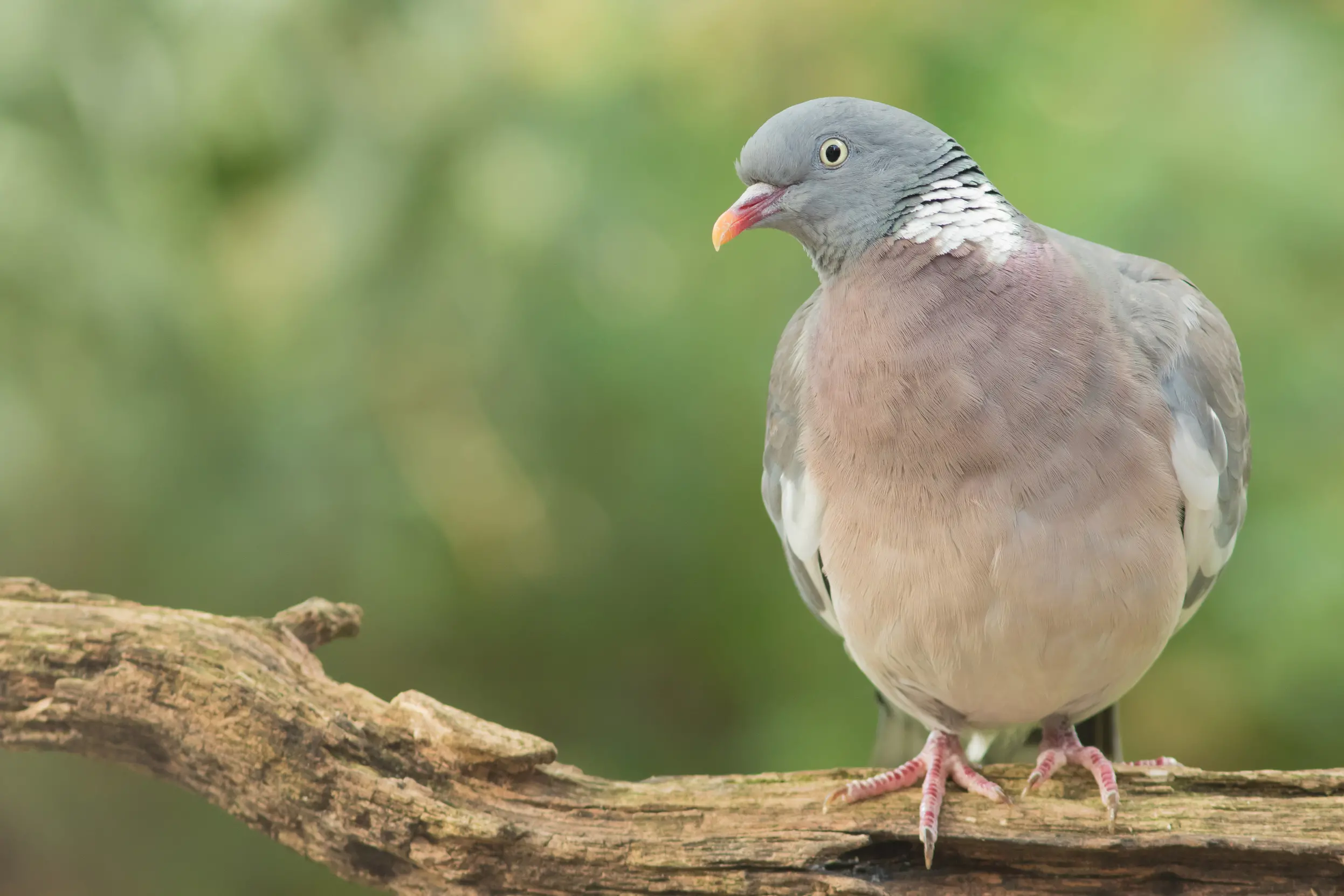
The adaptability of the Common Wood Pigeon can be outlined as follows:
- Woodlands: Thriving in both deciduous and coniferous realms where nesting opportunities abound.
- Urban Environments: Successfully acclimating to parks and gardens, where forage opportunities meet human provided resources.
- Agricultural Fields: Feeding on crops, thereby playing a complex role as both forager and potential agricultural pest.
- Shrublands: Utilizing these areas for cover and additional food sources.
The flexibility in habitat selection allows the wood pigeon to maintain stable populations across its range. Dispersed populations help strengthen the overall resilience of the species, enabling them to adapt to environmental changes effectively.
Geographic Range
The breeding range of the Common Wood Pigeon really emphasizes its adaptability, extending far and wide across ecological zones. Its geographic reach includes:
- Western Europe to western Siberia: Ensuring robust populations across these regions.
- Southern Range: Spanning down to the Maghreb region in North Africa, Turkey, and Iraq.
- Subspecies specific locations: Such as Columba palumbus iranica in southeastern regions from Iraq to Turkmenistan.
This broad geographic distribution significantly adds to the wood pigeon’s resilience. Subspecies such as Columba palumbus azorica and Columba palumbus maderensis, while presently rare, underscore the variations that have emerged across different habitats and ecosystems over time.
Nesting Locations
Nesting behaviors and locations are critical for the survival of the Common Wood Pigeon. They often build nests in wooded areas that range from expansive forests to urban parks. A closer look at their nesting preferences reveals:
- Nest Construction: Wood pigeons utilize dry twigs and materials they find in their surroundings, constructing nests that are quite flat yet adequately serve their purpose for raising young.
- Nesting Heights: Common Wood Pigeons typically build nests at variable heights in trees or even shrubs. This kind of height variability can provide additional safety against terrestrial predators.
- Breeding Season: This species is capable of producing multiple broods from late February extending through early September, demonstrating their reproductive flexibility.
The approach wood pigeons take towards nest placement further illustrates their adaptable nature. Their ability to construct and reuse nests across different seasons not only serves as a survival strategy but also allows them to thrive in diverse environments.
Behavior and Feeding Habits
The Common Wood Pigeon’s behavioral traits and feeding habits provide a window into its ecological significance. The feeding behavior of wood pigeons is primarily granivorous, focusing mainly on seeds and grains, yet they are not strictly confined to a plant-based diet.
Feeding Behavior
The wide array of dietary selections available to the Common Wood Pigeon illustrates its adaptability. Some crucial aspects of their feeding behavior include:
- Diverse Diet: Common Wood Pigeons consume leaves, buds, roots, and various fruits, allowing them to thrive in various habitats.
- Ground Foraging: Feeding is primarily conducted on the ground, and they are known to forage for seeds and grains, often in large flocks that can lead to significant agricultural damage.
- Deterrent Impact: Their feeding habits on agricultural crops can create conflicts between populations and farmers, necessitating management strategies.
This flexibility in diet not only ensures their survival across diverse conditions but also makes them ecological influencers within their habitats. Their role as granivores impacts not only their own populations but also those of the plants they consume and the predators that rely on them.
Courtship Displays
In addition to foraging behaviors, courtship displays are integral to the Common Wood Pigeon’s social dynamics. Males often puff up their chests and perform various vocalizations to attract females.
The courtship behaviors can be summarized as follows:
- Visual Displays: Males engage in bowing and circling to demonstrate their fitness.
- Courtship Feeding: They seek out food to present to potential mates, showcasing their ability to provide and strengthen bonds.
- Aerial Acrobatics: Males sometimes engage in flying displays that enhance their attractiveness to females.
Through these multifaceted courtship displays, wood pigeons not only convey reproductive readiness but also reinforce the importance of physical health to potential mates.
Migratory Patterns
Although generally classified as sedentary, Common Wood Pigeons do exhibit migratory patterns in response to environmental changes. This behavior can vary significantly depending on food availability and seasonal conditions.
Factors influencing their movement patterns include:
- Seasonal Shifts: During autumn, wood pigeons may move to areas where food is more abundant, indicating an adaptive strategy rather than a long-distance migration.
- Local Movements: Changes in their habitat conditions, such as food scarcity, can prompt shifts in territory in local areas rather than extensive migrations.
This regional adaptability showcases how wood pigeons can respond dynamically to available resources, maintaining their populations even in varying environments.
Subspecies and Variations
The diversity among the Common Wood Pigeon species is further reflected in the recognized subspecies, each displaying unique adaptations and characteristics that allow them to thrive in their respective environments.
Recognized Subspecies
- Columba palumbus palumbus: This subspecies is commonly found throughout Europe and is known for its larger size.
- Columba palumbus azorica: Specific to the Azores, it shows remarkable adaptations to its isolated environment.
- Columba palumbus iranica: Found in parts of Iran and Turkmenistan, this subspecies illustrates how geographic barriers create divergences in characteristics.
- Columba palumbus casiotis: Ranging from Southeast Iran to Nepal, showcasing variations in size and plumage.
- Columba palumbus maderensis: Once present in Madeira, it is now extinct, highlighting the consequences of environmental changes on biodiversity.
This diversity shows how geographic separation can lead to variations in size, plumage, and behavior, reinforcing the adaptability of the Common Wood Pigeon to different ecological pressures.
Key Differences Among Subspecies
While all subspecies share core traits characteristic of the Common Wood Pigeon, notable differences affect their interactions with humans and their habitats:
- European Wood Pigeon (Columba palumbus palumbus)
- Sizeable and commonly found in urban areas.
- Human interactions often involve urban environments where they forage on discarded food.
- North African Wood Pigeon (Columba palumbus elegans)
- Smaller size and less urban adaptation.
- Less interaction with humans, often residing in rural agricultural areas.
- Iranian Wood Pigeon (Columba palumbus iranica)
- Found primarily in rural settings, limited interaction with humanity.
- Focused on agricultural foraging strategies.
- Azores Wood Pigeon (Columba palumbus azorica)
- Unique plumage that differentiates them from mainland counterparts.
- Adapted to both urban and rural settings within the islands, showcasing versatility.
- Asian Wood Pigeon (Columba palumbus sch imperatorum)
- Demonstrating adaptability in urban gardens and scrubland areas.
- Shares similarities with European wood pigeons, reflecting similar ecological strategies.
This spectrum of variations among subspecies highlights the broader ecological role of the Common Wood Pigeon across different regions.
Interaction with Humans
The Common Wood Pigeon has a multifaceted relationship with humans, one marked by both attraction and conflicts. These interactions have evolved significantly over history, reflecting the changing landscapes and lifestyles humans inhabit.
Historical Significance
Historically, wood pigeons have been intertwined with human development. They were domesticated around 5,000 years ago, primarily serving as reliable sources of meat and messengers during times of war. Their exceptional navigation abilities captured human attention, leading to their utilization in communication before modern methods were devised.
Today, the Common Wood Pigeon enjoys a unique cultural status, often regarded as symbols of love and harmony due to their monogamous mating habits. This enduring significance is perpetuated in folklore and artistic representations across various cultures, instilling a sense of respect and admiration for the species.
Park and Urban Presence
In the modern era, the Common Wood Pigeon has shown remarkable resilience in adapting to urban life. Flourishing in parks, gardens, and other human-influenced environments, they often seek out food remnants discarded by the public, forming large flocks that can draw both amusement and annoyance from city dwellers.
- Feeding Habits: In urban areas, wood pigeons find abundant resources through human activities, resulting in a symbiotic relationship where they benefit from our wastefulness.
- Cultural Engagement: Many urban people take pleasure in feeding wood pigeons, reinforcing their presence in city life and establishing a connection with nature despite the urban backdrop.
Throughout the past decades, wood pigeons have transitioned from rural landscapes to urban environments, showcasing their adaptability and the complexities surrounding human-wildlife interactions.
Hunting and Conservation Efforts
The Common Wood Pigeon is a highly regarded species for both bird watchers and hunters. While hunting can contribute to population control, unregulated practices often jeopardize their numbers. Conservation approaches aim to balance the benefits of hunting with the need to protect wood pigeons, ensuring they maintain healthy populations across their ranges.
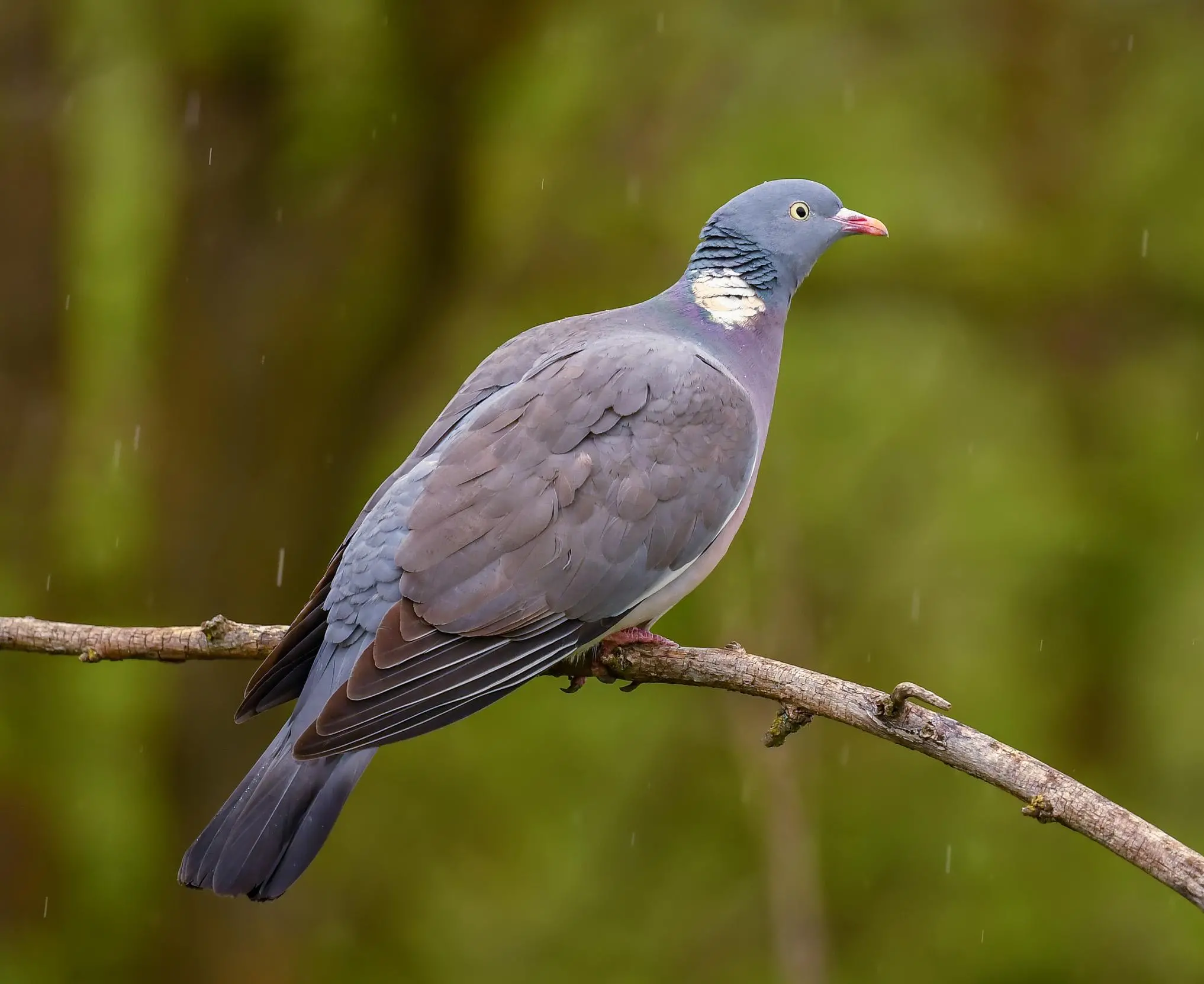
Conservation efforts have highlighted the relationship between managing bird populations and addressing issues such as habitat destruction and urban development. Regulations may vary; however, many programs aim at fostering a greater understanding and appreciation of the wood pigeon’s role within both ecosystems and cultural contexts.
Role in the Ecosystem
Understanding the role of the Common Wood Pigeon extends beyond its characteristics and interactions with humans; it plays a crucial part in the ecosystem through seed dispersal, predation dynamics, and biodiversity enhancement.
Seed Dispersal
The wood pigeon is a significant player in the process of seed dispersal, which is vital for maintaining healthy ecosystems. They consume a variety of seeds and fruits, facilitating plant reproduction and diversity. As pigeons move about their habitats, they drop uneaten seeds, allowing for germination in new areas.
- Food Sources: Wood pigeons help in the distribution of various plant species, contributing to the regeneration and expansion of forest ecosystems.
- Ecosystem Stability: Through their role in seed dispersal, they maintain plant diversity and promote healthy habitats that support a myriad of other species.
This essential ecological function highlights the interconnectedness of species within ecosystems, emphasizing the importance of wood pigeons beyond their aesthetic appeal.
Food Source for Predators
In addition to their role as seed dispersers, Common Wood Pigeons serve as key prey for various predators, including birds of prey such as hawks and owls.
- Food Web Dynamics: Their presence helps support the larger ecological web, maintaining balance and stability within their environment.
- Predator-Prey Interactions: The relationship between wood pigeons and their predators indicates the health of ecosystems and illustrates the complex interactions that define biodiversity.
Impact on Biodiversity
Impacts attributable to the presence of Common Wood Pigeons are profound. They contribute significantly to:
- Plant Community Dynamics: Their feeding habits influence plant growth, diversity, and ecosystem health.
- Regenerative Processes: By supporting plant populations and providing nutrients back to the soil through droppings, they promote the productivity of their environments.
These attributes underscore the significance of the Common Wood Pigeon as a species actively participating in broader ecological processes, ultimately shaping their habitats and contributing to biodiversity.
Challenges and Threats
While the Common Wood Pigeon is a resilient species, it faces numerous challenges that threaten its populations and habitats.
Habitat Destruction
The continuing loss of natural habitats poses a critical threat to wood pigeon populations. Key factors contributing to this include:
- Urbanization: Expansion of cities encroaches on natural habitats, limiting access to essential resources.
- Deforestation: Logging activities lead to the elimination of nesting opportunities and food sources.
- Agricultural Practices: The application of pesticides and monoculture farming reduces the diversity of plants available for feeding.
These challenges necessitate conservation efforts to balance human development with the need to maintain healthy ecosystems for species like the wood pigeon.
Climate Change Effects
The impacts of climate change are extensive, potentially disrupting breeding patterns and availability of food. Several ways climate change affects wood pigeons include:
- Altered Food Sources: Changes in climate can influence the growing cycles of plants that wood pigeons rely on for food, potentially creating mismatches in food availability during breeding periods.
- Nesting Behavior: Climate changes can lead to habitat alterations that reduce the availability of safe nesting sites.
- Vulnerability to Predators: Fragmentation of habitats due to climate impacts can increase wood pigeons’ exposure to predation.
These factors serve to emphasize the need for careful management and habitat conservation to ensure the continued survival of wood pigeon populations.
Pollution and Its Impact
Pollution poses a significant risk to the health and well-being of wood pigeons, affecting their habitats and mortality rates. Key aspects include:
- Air Pollution: Exposure to air toxins can impair respiratory health, leading to decreased reproductive success.
- Food Contamination: Pollution can contaminate natural food sources, resulting in harmful ingestions that affect the pigeons’ health.
- Urban Dynamics: High pollution levels in urban areas can reduce the longevity and reproductive capabilities of wood pigeons, compromising their populations.
Addressing pollution through effective regulations and environmental management is crucial to the health of these birds and the broader ecosystems in which they reside.
Conclusion
The Common Wood Pigeon (Columba palumbus) stands out as a significant species across varied ecosystems, contributing to biodiversity, cultural history, and urban dynamics. However, the challenges it faces ranging from habitat destruction to climate change and pollution only highlight the need for thoughtful conservation efforts. The adaptability and resilience of the Common Wood Pigeon, coupled with its critical ecological role, ensure that it remains a vital part of our natural world, deserving of continued study and protection. Understanding these dynamics not only enriches our appreciation of this beautiful bird but also reinforces the interconnectedness of life within our ecosystems.





